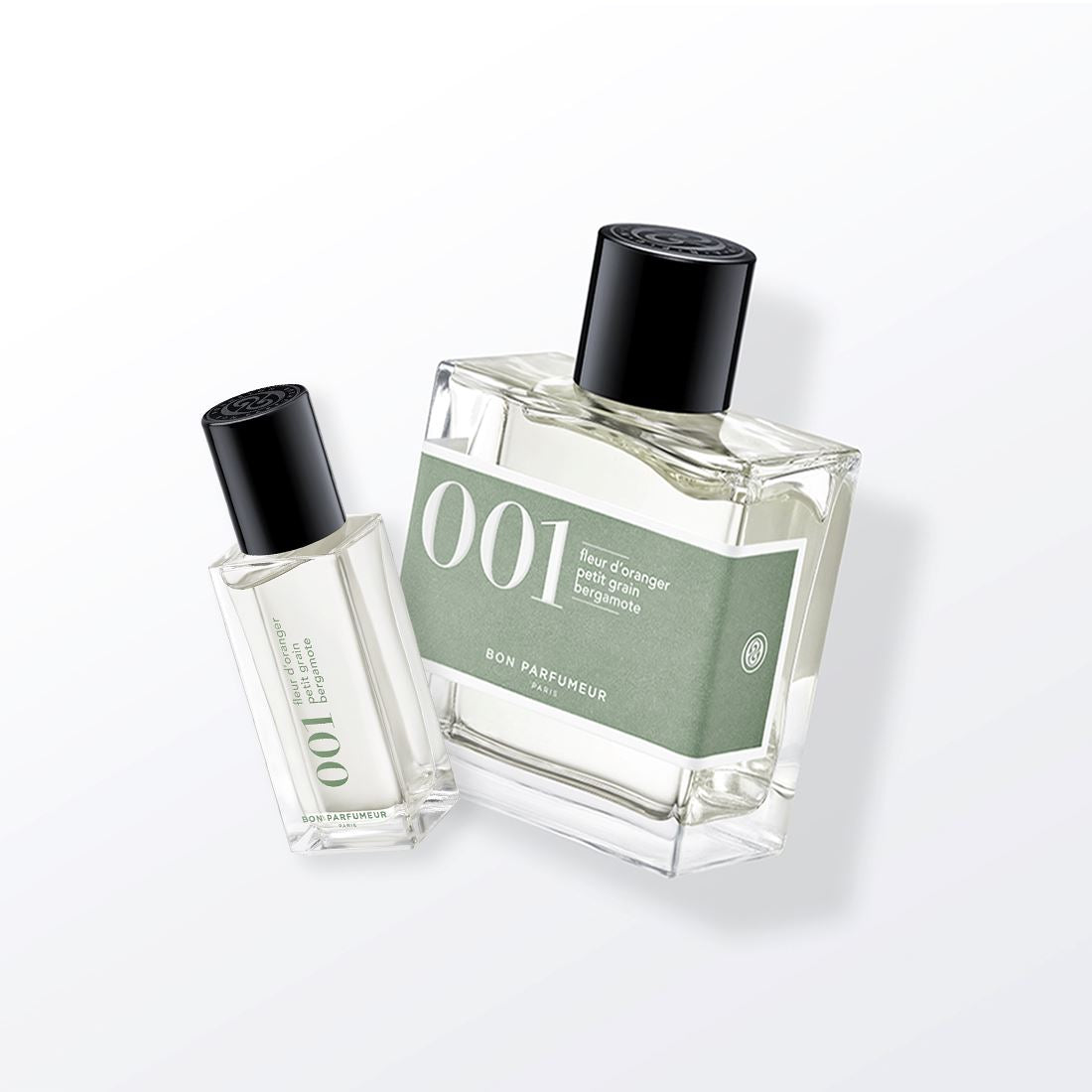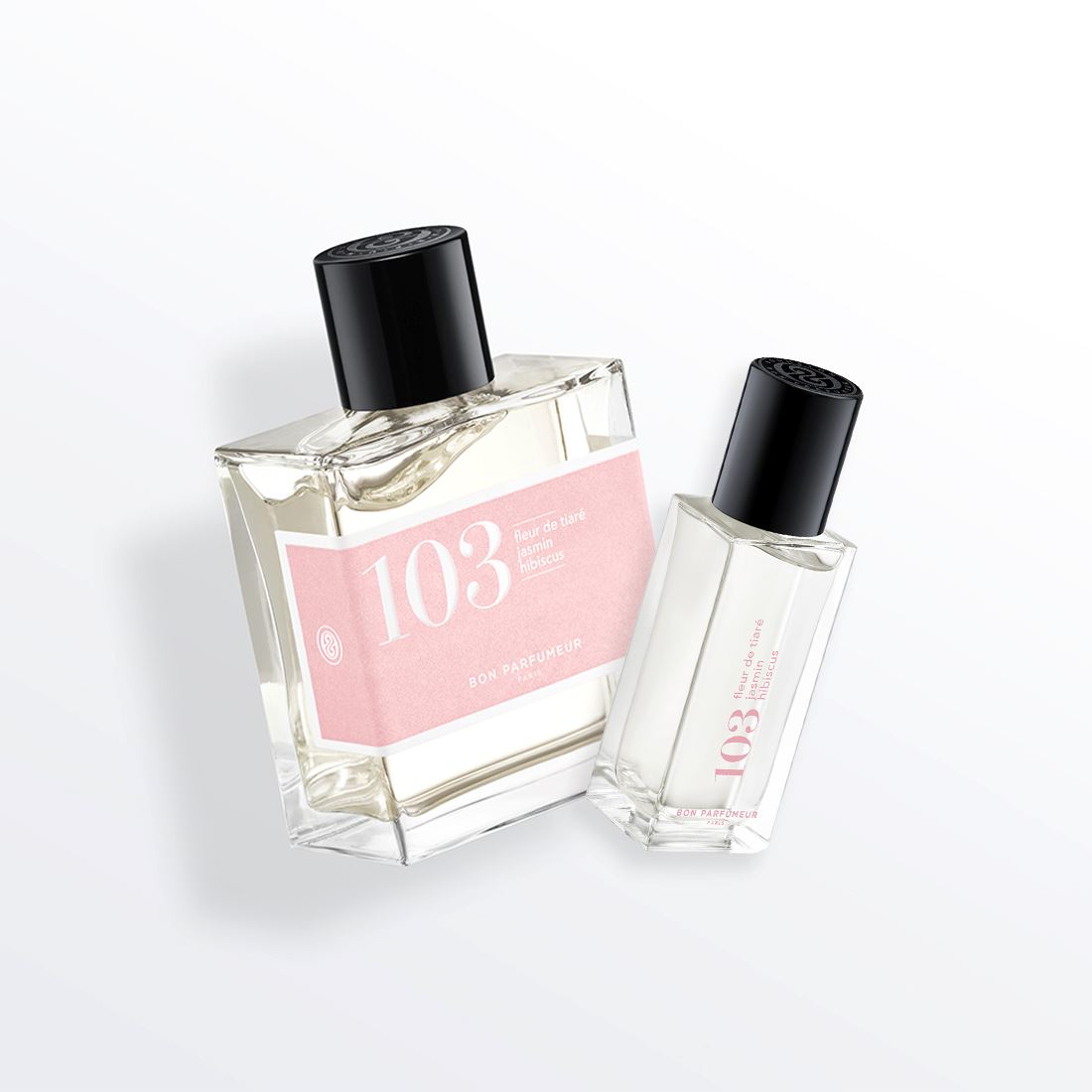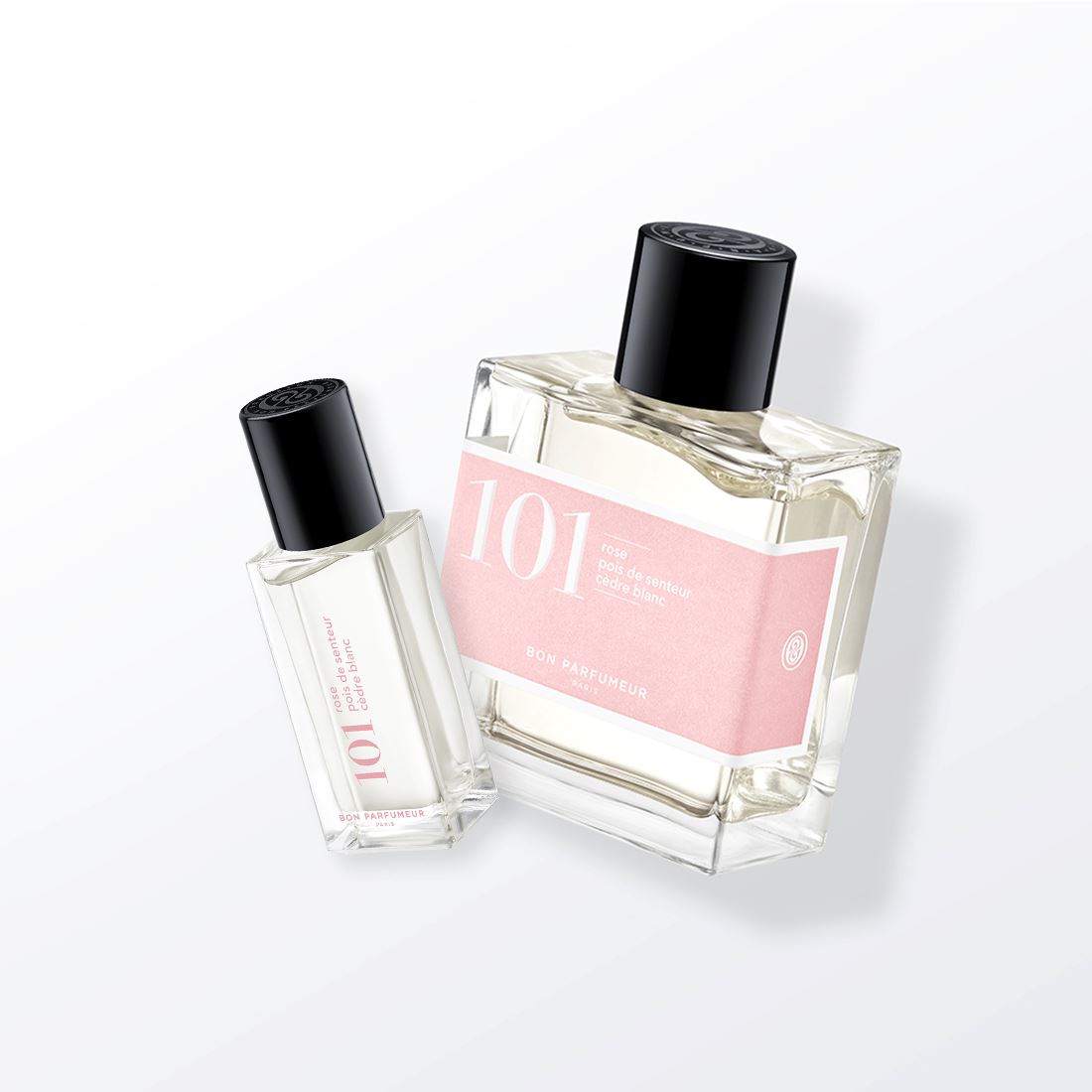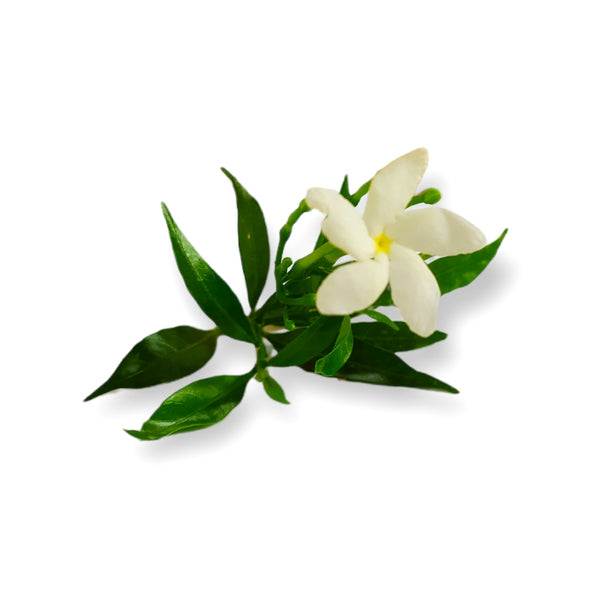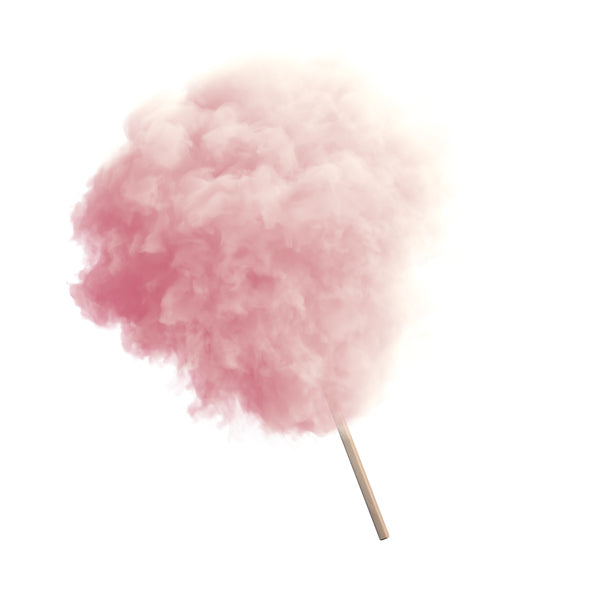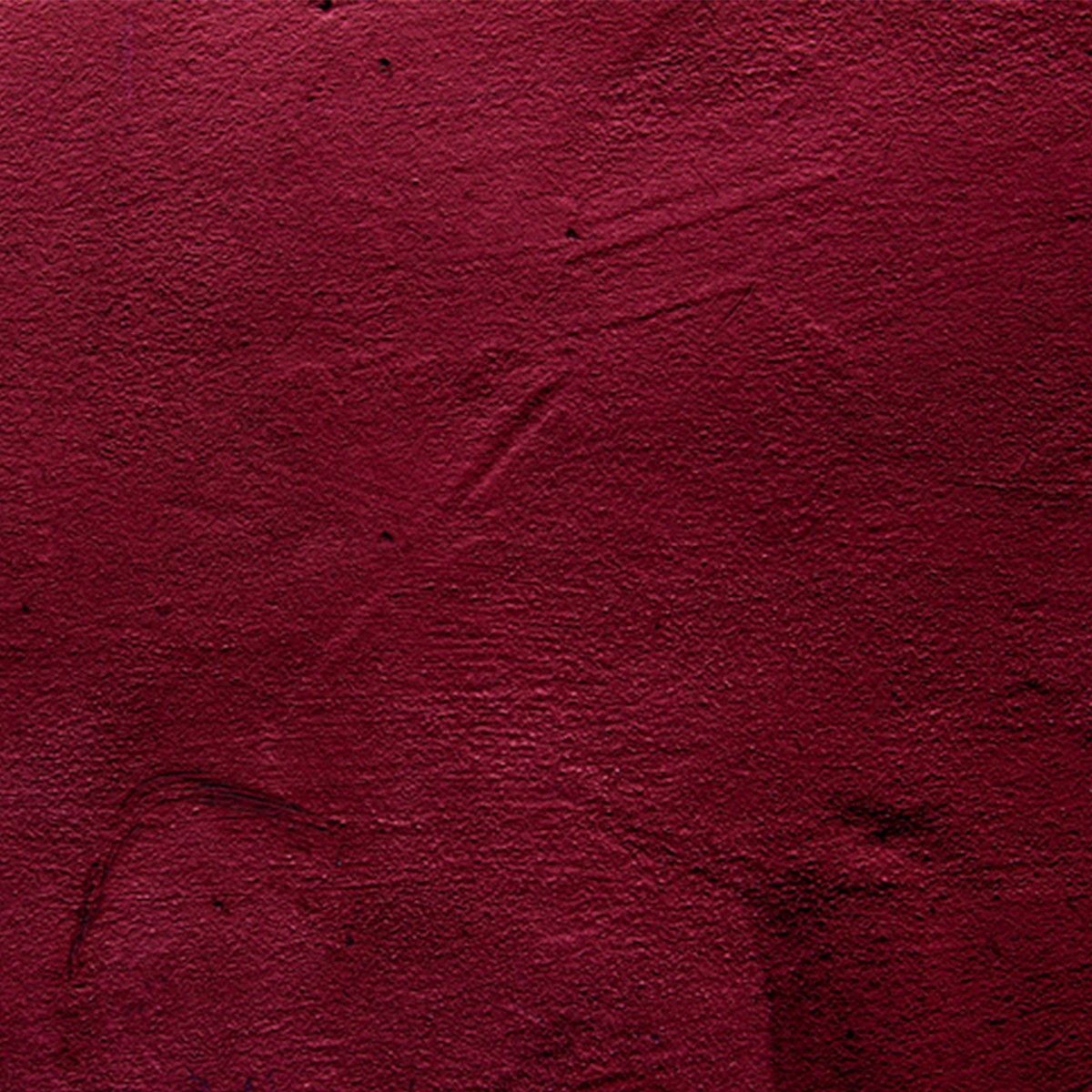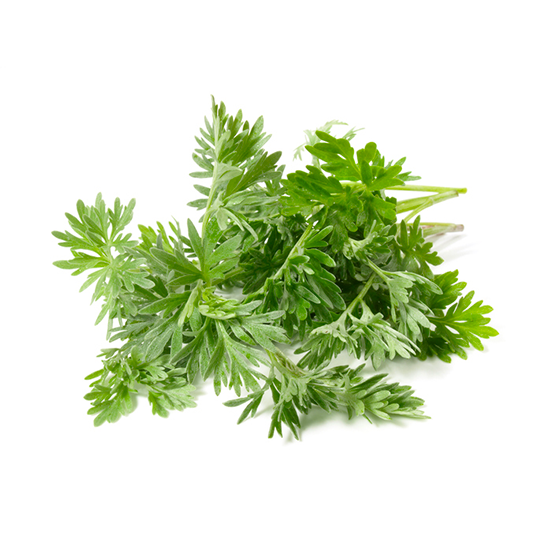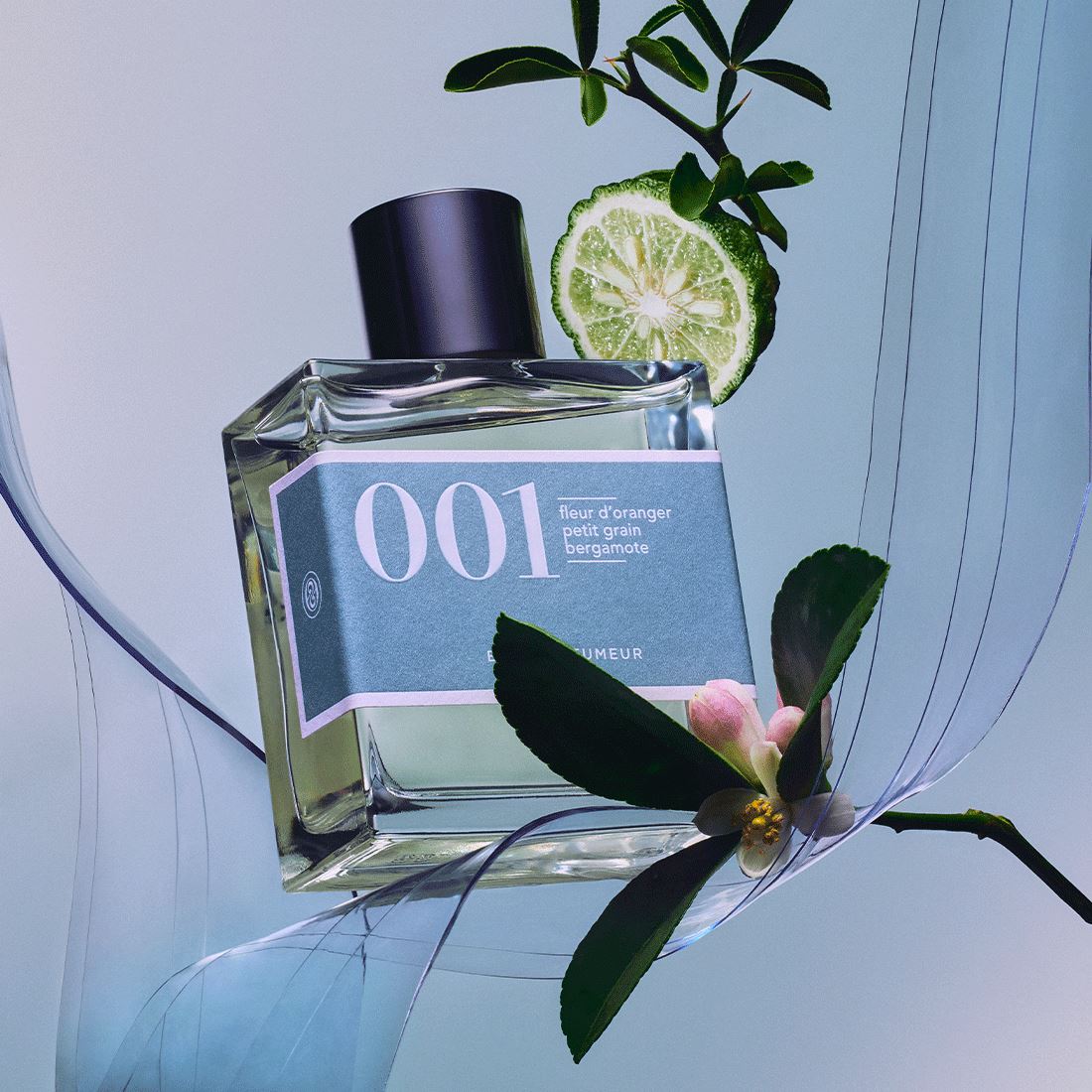In the beginning..
Jasmine Sambac, whose botanical name is Jasminum sambac, is an iconic flower in perfumery. Its use dates back to antiquity, when this exotic flower from South Asia, often India, was already appreciated for its fruity, solar and sensual fragrance. The name “Sambac” comes from the Arabic word “sambac”, meaning “jasmine flower”.
The first traces of its use date back to ancient India, where Jasmine Sambac was revered for its fragrant properties. Indian women incorporated it into their beauty and well-being rituals, and it was also used in religious ceremonies and weddings.Later, with the expansion of trade routes between India and the Middle East, Jasmine Sambac was introduced to the Arabian Peninsula region, becoming an integral part of Arab culture.
Perfumers in the Middle East quickly recognize the potential of this precious flower and began using it to create complex and solar floral fragrances.The Jasmin Sambac craze then spread to Egypt, Persia, and finally to Europe during the medieval period, through Arab conquests. Its arrival In Europe marked a significant turning point in the history of Western perfumery. Jasmine Sambac became a key component of luxury perfumes, appreciated for its fruity, creamy, and floral effects.
The cultivation of Jasmine Sambac
Jasmine Sambac thrives primarily in regions such as India, Sri Lanka, Bangladesh, Nepal, and Pakistan, with Indian Jasmine Sambac being the most renowned. These regions offer a warm and humid climate ideal for its growth. In India, Jasmine Sambac is particularly famous; its cultural importance has earned it the title of the “Queen of flowers”.
Regions such as Madurai, Mysore and Tamil Nadu are renowned for their production of high-quality Jasmine Sambac. Jasmine Sambac cultivation has also spread to other countries in South-East Asia, where it is cherished for its diverse uses, from perfumery to adorning hair and traditional floral necklaces.Thanks to its growing popularity, Jasmin Sambac production has been introduced to other parts of the world, including Africa, South America, and parts of the Middle East.
Cultivating Jasmine Sambac demands meticulous attention and expertise; this flower is demanding and needs specific conditions to fully blossom. Jasmine Sambac favors a tropical or subtropical climate with warm temperatures and high humidity. It thrives in well-drained soil, rich in organic matter.
The propagation of Jasmine Sambac is usually done by using cuttings or grafting. Jasmine Sambac requires regular attention, including watering, fertilizing, and pruning to promote healthy growth. Harvesting Jasmine Sambac is a delicate process and needs to be done early in the morning when the flowers are at their most fragrant and fresh. They are hand-picked to preserve their quality.
What do you know about Jasmine Sambac in perfumery ?
Transforming Jasmine Sambac into a fragrant ingredient requires a meticulous process to preserve the integrity of its delicate scent. Here are the key stages in the processing and treatment of Jasmine Sambac in perfumery:
-Extraction: The traditional method for extracting the fragrance of Jasmine Sambac is enfleurage. The fresh flowers are placed on plates covered with a thin layer of fat (formerly animal fat but nowadays vegetable fats such as coconut butter are used). Over time, the fragrant molecules are diffused into the fat over time, infusing it with the enchanting scent of Jasmine Sambac. A concrete is then formed, which is washed with alcohol to obtain an absolute
-Absolute: Another common extraction method is solvent extraction, which produces a Jasmine absolute. This process requires volatile solvents to extract the fragrant molecules from the flowers, creating a highly concentrated Jasmine absolute. This is the most common extraction method.
-Co-distillation: Jasmine Sambac can be exceptionally co-distilled with other natural ingredients, such as essential oils, to create unique fragrance accords. This process is very rare and allows us to obtain new ingredients.
-Maceration: A less common but sometimes used method is the maceration of Jasmine Sambac flowers in a vegetable oil base to obtain a fragrant essence.
The extraction process is crucial in capturing the true fragrance of Jasmine Sambac and creating high-quality perfumed ingredients.The olfactory profile of Jasmine Sambac is complex.
Its olfactory notes are recognized as fruity, green, and sunny. However, Jasmine Sambac also has exotic, animalic and slightly spicy facets.The floral softness and sensuality of Jasmine Sambac makes this white flower an interesting choice for very floral, solar fragrances.Jasmine Sambac and Jasmine Grandiflorum exhibit different olfactory characteristics. Jasmine Sambac has a green, fruity, and solar facet whereas Jasmine Grandiflorum has a stronger animalic facet, and its fruity facets are less pronounced than those of Jasmine Sambac.
Jasmine Sambac is more commonly used than Jasmine Grandiflorum because it is easier to cultivate and is more affordable.
Famous perfumes with Jasmine Sambac
Jasmine Sambac has become very widespread and is used in a wide range of applications: eau de toilette, eau de parfum, cosmetics, skincare, home fragrances… It can be found in a number of now iconic perfumes:
J’adore - Dior:
Launched in 1999, J’adore is an iconic Dior fragrance, featuring Jasmine Sambac combined with notes of rose, magnolia and ylang-ylang to create an elegant fruity floral bouquet. This fragrance has been adapted into body cream, soap, scrub, …
Gucci Bloom - Gucci:
Launched in 2017, Gucci Bloom is a modern feminine fragrance featuring an abundance of Jasmine Sambac, enhanced by a note of tuberose, creating a floral composition that reflects its name.
Alien - Thierry Mugler:
Alien, launched in 2005 blends Jasmine Sambac with woody and amber notes to create an inimitable olfactory signature. At Bon Parfumeur, several fragrances in the collection are composed around Jasmine Sambac. This is particularly true of the 103, which features a sunny accord of jasmine, tiare flower and hibiscus.
Jasmine Sambac & Marigold - Jo Malone London:
Within the Cologne Intense collection, this creation pays tribute to the most precious of jasmines. Its heart of jasmine sambac absolute is mingled with exotic ylang-ylang. This is entwined with the warmer notes of benzoin resin, vanilla and amber.
The 002 modernizes the cologne with its jasmine-amber accord, adding a floral amber facet. A zesty, fresh top note that remains faithful to the classic cologne. The violet leaf adds a touch of modernity, bringing a green and slightly fruity facet. A floral heart where the gentleness of lily of the valley and peony lightens the sunny jasmine. Musk and white amber notes serve as a soft bed for the flowers.
In the 202, jasmine is linked to fruity notes, bringing a floral facet to this fresh fruit cocktail. A juicy top with grapefruit, melon, and lemon. A layering of fruits with redcurrant at the heart. Floral notes which have a diluting effect on the fruits, making them transparent. A slightly woody base. Caramel coats the fragrance and makes it slightly gourmand and mischievous.
Other varieties of jasmine are also used by perfumers, such as jasmine grandiflorum.
